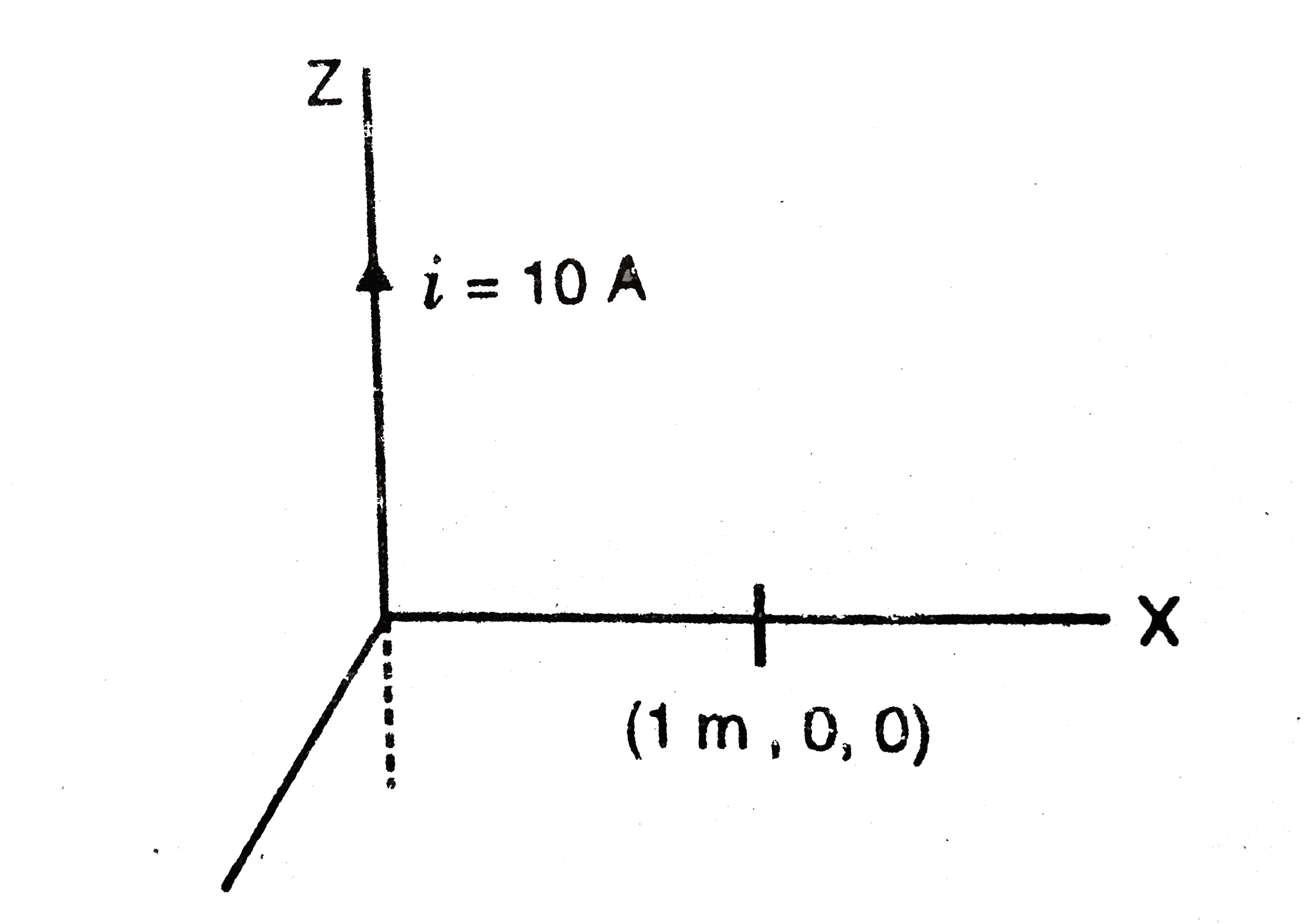Text Solution
Verified by Experts
Topper's Solved these Questions
Similar Questions
Explore conceptually related problems
HC VERMA-MAGNETIC FIELD DUE TO CURRENT-Exercises
- Using the formulae ((vecF)=(vec qv)xx (vec B) and (B= (mu0)i/2pi r ), ...
Text Solution
|
- A current of 10A is established in a long wire along the positive z-ax...
Text Solution
|
- A copper wire of diameter 1.6 mm carries a current of 20A. Find the ma...
Text Solution
|
- A transmission wire carries a current of 100A. What would be the magne...
Text Solution
|
- A long, straight wire carrying a current of 1.0 A is placed horizontal...
Text Solution
|
- A long, straight wire of radius r carries a current i and is placed ho...
Text Solution
|
- A long, straight wire carrying a current of 30 A is placed in an exter...
Text Solution
|
- A long vertical wire carrying a current of 10A in the upward direction...
Text Solution
|
- Figure shows two parallel wires separated by a distance of 4.0 cm and ...
Text Solution
|
- Two parallel wires carry equal currents of 10A along the same directio...
Text Solution
|
- Two long, straight wires, each carrying a current of 5A, are placed al...
Text Solution
|
- Four long, straight wires, each carrying a current of 5.0 A, are place...
Text Solution
|
- Figure shows a long wire bent at the middle to form a right angle. Sho...
Text Solution
|
- Consider a straight piece of length x of a wire carrying a current i. ...
Text Solution
|
- Consider a 10-cm long piece of a wire which carries a current of 10A ....
Text Solution
|
- A long, straight wire carries a current i. Let B1 be the magnetic fiel...
Text Solution
|
- Figure shows a square loop ABCD with edge length a. The resistance of ...
Text Solution
|
- Figure shows a square loop of edge a made of a uniform wire. A current...
Text Solution
|
- Consider the situation described in the previous problem. Suppose the ...
Text Solution
|
- The wire ABC shown in figure forms an equilateral triangle. Find the m...
Text Solution
|
